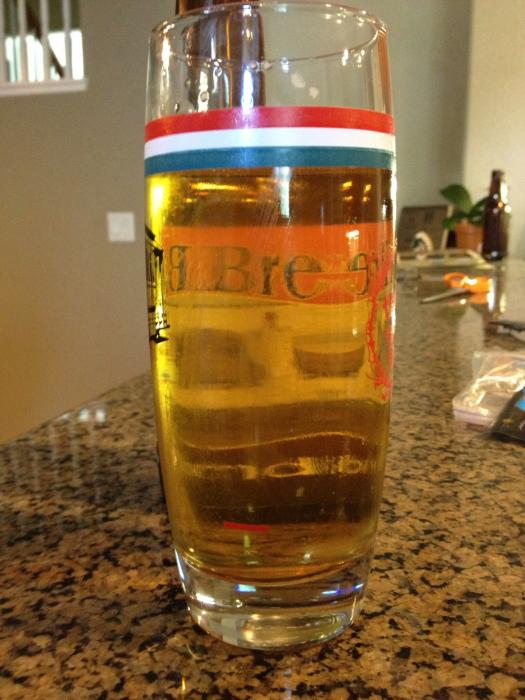You are using an out of date browser. It may not display this or other websites correctly.
You should upgrade or use an alternative browser.
You should upgrade or use an alternative browser.
Cold crashing
- Thread starter bobk34
- Start date

Help Support Homebrew Talk - Beer, Wine, Mead, & Cider Brewing Discussion Forum:
This site may earn a commission from merchant affiliate
links, including eBay, Amazon, and others.
triskelion
Well-Known Member
Basically, cool your beer as cold as possible when fermentation is complete, before you bottle or keg. It's done to drop most of the yeast out of suspension and give you a clearer beer. I don't think it's an exact science, but I usually do it for about 2 days. I put the fermenter in an ice bath. I use bottles of salt water that have been in the freezer because it can get much colder than fresh water without freezing.
Cold crashing is a way to help clear a beer after fermentation
you take your brew and put it in a cold place (freezer, fridge, cold garage)
this helps the yeast floculate faster and fall to the bottom
there helps clarify the beer, don't worry there will still be enough yeast in there for carbonation after bottling
A quick search will yield more details.
you take your brew and put it in a cold place (freezer, fridge, cold garage)
this helps the yeast floculate faster and fall to the bottom
there helps clarify the beer, don't worry there will still be enough yeast in there for carbonation after bottling
A quick search will yield more details.
ianw58
Well-Known Member
Cold crashing is cooling the beer to below 40°F but above freezing. The purpose is to allow larger proteins to coagulate and precipitate, leaving the beer clearer than before cold crashing.
If you're fining with gelatin, crashing also forces out the chill haze. Adding the gelatin after a few days at cold crash temperatures will help to clear the beer even more.
Here's a glass of Centennial Ale from a batch that was cold crashed and fined with gelatin. The fuzz is condensation on the outside of the glass, not in the beer. No, I do not filter my beer.

If you're fining with gelatin, crashing also forces out the chill haze. Adding the gelatin after a few days at cold crash temperatures will help to clear the beer even more.
Here's a glass of Centennial Ale from a batch that was cold crashed and fined with gelatin. The fuzz is condensation on the outside of the glass, not in the beer. No, I do not filter my beer.

Reindeer
Well-Known Member
Any disadvantage to cold crashing?
I understand that its not appropriate for all styles.
I understand that its not appropriate for all styles.
The disadvantage is you remove the yeast and bring fermentation to a stop so bottle carbonating theoretically would take a few days to get rolling again and would take longer because you have less yeast in the bottles.
Similar threads
- Replies
- 10
- Views
- 818
- Replies
- 16
- Views
- 683

